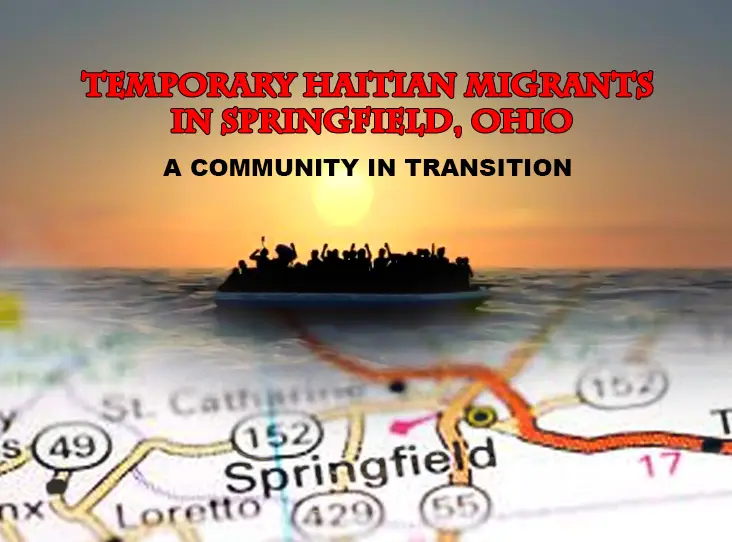Over the past several years, Springfield, Ohio, has experienced a notable influx of Haitian migrants, drawn by economic opportunities and the hope for a better life. This surge in temporary residents, many of whom are fleeing political instability, natural disasters, and economic hardship in their home country, has begun to reshape the local cultural and socioeconomic landscape.
Table of Contents
Origins of the Haitian Migration Crisis
Haiti, long troubled by political instability, severe poverty, and natural disasters such as the devastating 2010 earthquake and recent earthquakes and hurricanes, has seen a steady stream of its citizens seeking refuge abroad. The assassination of President Jovenel Moïse in 2021, followed by worsening gang violence and economic decline, has accelerated the exodus. Many Haitians have sought temporary or permanent refuge in neighboring countries like the Dominican Republic, as well as further afield in the United States.
In response to the crisis, the U.S. government implemented measures such as Temporary Protected Status (TPS) to allow Haitians to reside temporarily in the country while conditions in Haiti remain dire. For some, Springfield has become a destination of choice.
Why Springfield?
Springfield, a small city in southwest Ohio, historically rooted in manufacturing and agriculture, may seem an unlikely destination for Haitian migrants. However, there are several factors that make it appealing.
First, Springfield’s cost of living is relatively low compared to larger urban areas. For many migrants who arrive with limited financial resources, affordable housing options are crucial. Additionally, Springfield has a growing demand for labor in industries such as agriculture, warehousing, and food processing, which many migrants can fill. The city’s proximity to larger metropolitan areas like Dayton and Columbus also offers more job opportunities within commutable distances.
Moreover, the Haitian community in Ohio has been gradually growing, offering a network of support for new arrivals. Many Haitians have family members or acquaintances already settled in the region, making the transition somewhat easier.
The Community Impact
As the number of Haitian migrants has grown, so too has their visibility in the local community. The surge in new residents has brought both opportunities and challenges to Springfield.
Economically, the influx of migrants has helped alleviate labor shortages in industries like agriculture and manufacturing. Many of these jobs are low-paying and physically demanding, but migrants are often willing to fill roles that local workers are not. Businesses have benefited from having a steady workforce, and the overall local economy has seen growth as a result.
However, the rapid growth of the Haitian population has also strained resources. Local schools, healthcare providers, and social services are adapting to meet the needs of an increasingly diverse population. Language barriers have become a significant issue, as many Haitian migrants speak Haitian Creole or French, which creates communication challenges in public institutions.
Local government agencies, non-profits, and churches have been stepping up to provide essential services to the Haitian community. Volunteers are offering language classes, legal support, and health services, but there are still gaps in addressing their needs. Springfield’s immigrant advocacy groups are calling for more comprehensive integration efforts from city officials and the state government to ensure that the Haitian population is adequately supported.
Social and Cultural Integration
The Haitian migrants have brought a rich cultural heritage with them to Springfield, which is becoming more visible as the community grows. Haitian cuisine, music, and religious traditions have begun to appear in local markets, restaurants, and events. This cultural diversity is a welcome addition to the city’s social fabric, enriching the lives of longtime residents as well.
However, integration has not been without challenges. There have been instances of tension between migrant populations and long-standing residents, particularly in neighborhoods where new migrants have concentrated. Some locals are concerned about the strain on public services and fear that the influx of new residents may change the character of their communities. To address these concerns, local leaders are working to foster dialogue and collaboration between communities to ensure a peaceful coexistence.
Looking Ahead
The surge of Haitian migrants in Springfield, Ohio, is part of a broader pattern of migration across the U.S. as people from various countries seek safety and opportunity in the face of global instability. While Springfield is adapting to its changing demographics, the long-term impact of this migration remains to be seen. Will the city succeed in fully integrating its new residents, or will divisions grow as resources are stretched?
The future will depend largely on the community’s ability to rise to the occasion embracing diversity, addressing challenges head-on, and working together to build a brighter future for all who call Springfield home. For the Haitian migrants who now make up an important part of the city’s fabric, Springfield offers a chance for stability, even if their stay is temporary. And for the city itself, the opportunity to become a more inclusive and vibrant community is within reach.
Author
Stay connected for new publications, events, and more.







More Stories
Le pape Léon XIV : un pontife historique qui jette un pont entre les continents et les cultures
What Happens When a Pope Dies
Le Prix de la Liberté : 17 Avril 1825, une Ordonnance Injuste. Déclaration de Macron